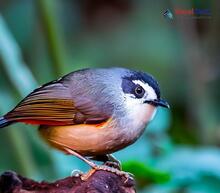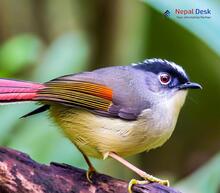The bird kingdom is vast and diverse, with numerous species showcasing a stunning array of colors, shapes, and sizes. Among these fascinating creatures lies the Minla genus, a group of birds that has piqued the interest of birdwatchers and researchers alike. In this article, we will delve into the world of the Minla genus, exploring its evolution, taxonomy, morphology, ecology, species list, and existence in Nepal.
Evolution and Taxonomy
Minlas belong to the family Leiothrichidae within the Passeriformes order. Researchers believe that the Minla genus evolved in the Himalayas and radiated southwards into Southeast Asia. Over time, these birds adapted to various habitats found across diverse altitudes. Further investigations on their molecular phylogenetics are required to gain more insight into their evolutionary history.
Morphology
One striking feature of the Minla genus is its colorful plumage characterized by bright reds, yellows, blacks, and whites. Their small size sets them apart from other birds in their family. They possess short bills suited for insect-eating and strong legs for perching on branches.
Ecology
Minlas inhabit montane forests at elevations ranging between 1,500-3,800 meters above sea level and are predominantly insectivorous. Key aspects of their diet include small insects like caterpillars and beetles found on tree foliage or within bark crevices. They are highly social birds often foraging in mixed flocks alongside other bird species.
Species List
The Minla genus comprises five recognized species:
1. Red-tailed Minla (Minla ignotincta)
2. Chestnut-tailed Minla (Minla strigula)
3. Blue-winged Minla (Minla cyanouroptera)
4. Yellow-throated Minla (Minla flavolutea)
5. Scarlet-faced Liocichla (Minla auteirostris)
Existence in Nepal
Nepal's diverse altitudinal range and rich avian biodiversity offer ideal conditions for the Minla genus to thrive. Among the five species, the Chestnut-tailed Minla and Red-tailed Minla are commonly found in Nepal's forests, primarily in protected areas like Langtang National Park, Sagarmatha National Park, and Makalu Barun National Park.
In conclusion, the Minla genus represents an alluring aspect of the vast bird kingdom with its vibrant appearance, unique ecological attributes, and exciting evolutionary history. As we admire these colorful birds and their ecological significance, it is crucial to take conservation measures that protect their habitats and ensure their survival for future generations to appreciate.


